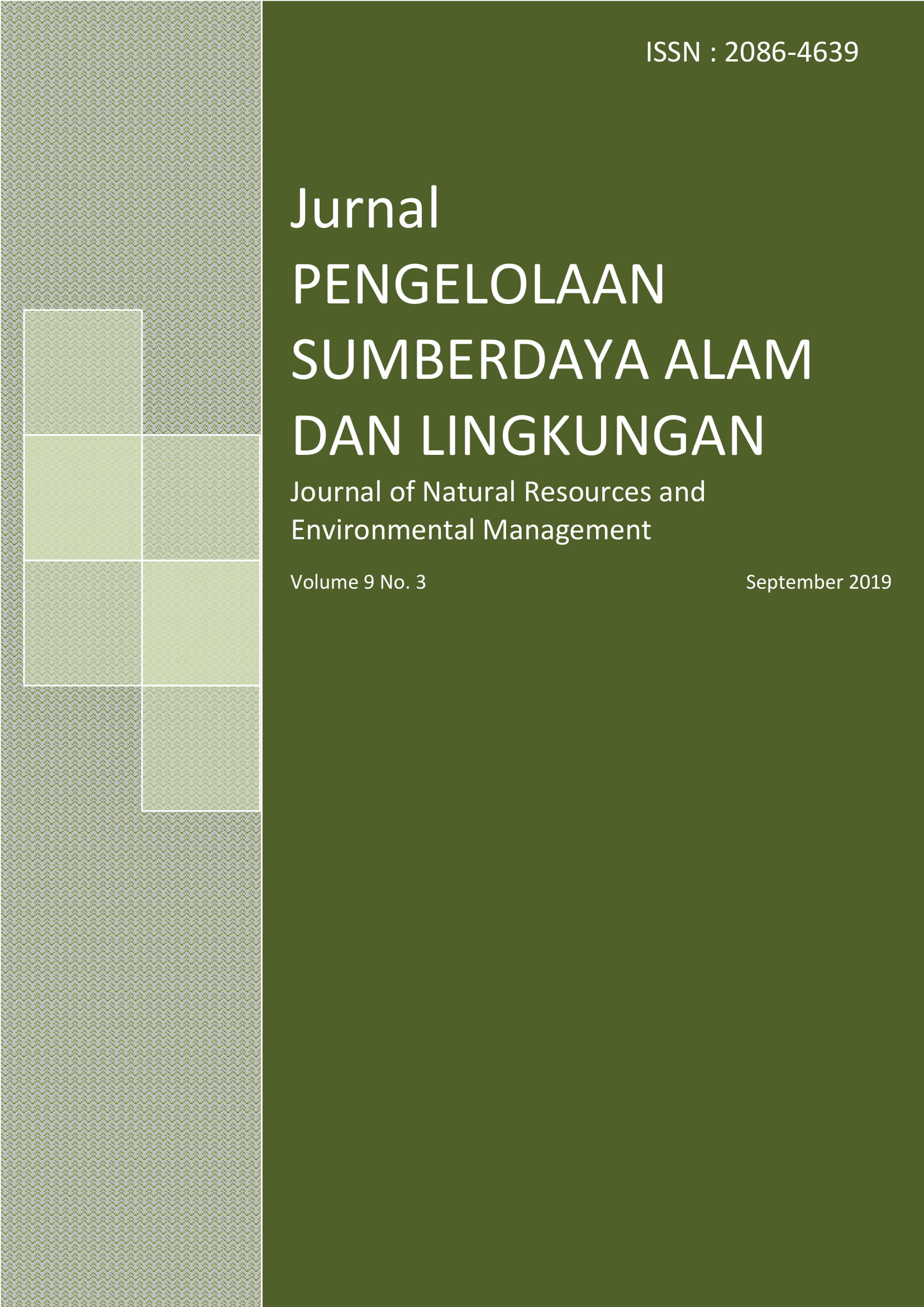Kelembagaan pengelolaan sumber daya pesisir Kota Gorontalo
Abstract
References
Ackermann F, Eden C. 2011. Strategic management of stakeholder: Theory and practice. Long Range Planning. 44:179-196.
Adrianto L, Soewardi K, Wardiatno Y. 2016. Analisis potensi konflik pemanfaatan ruang kawasan pesisir: integrasi rencana tata ruang darat dan perairan pesisir. Sodality: Jurnal Sosiologi Pedesaan. 139-144.
Areizaga J, Sanò M, Medina R, Juanes J. 2012. Improving public engagement in ICZM: A practical approach. Journal of Environmental Management. 109:123-135.
Bryson JM. 2004. What to do when stakeholder matter: stakeholder identification and analysis Techniques. Public Management Review. 6:21-53.
Cohen PJ, Steenbergen DJ. 2015. Social dimensions of local fisheries co-management in the Coral Triangle. Environmental Conservation. doi: 10.1017/S0376892914000423.
Franzén F, Kinell G, Walve J, Elmgren, Söderqvist T. 2011. Participatory social-ecological modeling in eutrophication management: The case of Himmerfjärden, Sweden. Ecology and Society. 16(4):27. doi: 10.5751/ES-04394-160427.
Gurneya GG, Cinnera JE, Sartin J, Presseya RL, Banc NC, Marshalld NA, Prabuning D. 2016. Participation in devolved commons management: Multiscale socioeconomic factors related to individuals’ participation in community-based management of marine protected areas in Indonesia. Environmental Science & Policy. 61:212–220. doi:10.1016/j.envsci.2016.04.015.
Luyet VR, Schlaepfer MB, Parlange A, Buttler A. 2012. Review A framework to implement stakeholder participation in environmental projects. Journal of Environmental Management. 111:213-219. doi: 10.1016/j.jenvman.2012.06.026.
Mayers J. 2005. Stakeholder Power Analysis. London (GB): International Institute for Environment and Development.
Morf A. 2005. Public participation in municipal planning as a tool for coastal management: Case studies from Western Sweden. Journal of the Human Environment. 34(2):74-83.
Ostrom E. 1990. The Evolution Of Institutions For Collective Actions. Edinburgh (GB): Cambridge university press.
Partomo S, Mangkuprawira A, Hubeis VS, Adrianto L. 2011. Pengelolaan danau berbasis co-management: Kasus Rawa Pening, Lake Management Based on Co-management: Case of Rawa Pening. Jurnal Pengelolaan Sumber daya Alam dan Lingkungan. 1(2):106-113.
Pita C, Pierce GJ, Theodossiou I. 2010. Stakeholder participation in the fisheries management decision making process: Fishers’perceptions of participation. Marine Policy. 34:1093–1102. doi: 10.1016/j.marpol.2010.03.009.
Reed SM, Graves A, Dandy N, Posthumus H, Huback K, Morris J, Prell C, Quin CH, Stringer LC. 2009. Who’s in and why? a typology of stakeholder analysis methods for natural resource management. Journal of Environmental Management. 90:1933-1949.
Sarinas BGS, Paragon TA. 2015. Stakeholders' awareness and participation in Coastal Resource Management (CRM) in Villa Beach, Iloilo City, Philippines. IAMURE International Journal of Ecology and Conservation. 15:232.
Satria A. 2015. Politik Kelautan dan Perikanan. Catatan perjalanan kebijakan era SBY hingga Jokowi. Jakarta (ID): Yayasan Pustaka Obor Indonesia.
Siregar M. 2011. Peranan stakeholder terhadap pengembangan ekowisata di Taman Nasional Teluk Cenderawasih Kabupaten Teluk Wondama Provinsi Papua Barat [tesis]. Bogor (ID): Institut Pertanian Bogor.
Schultz L, Duit A, Folke C. 2011. Participation, adaptive co-management, and management performance in the world network of biosphere reserves. World Development. 39(4):662-671. doi: 10.1016/j.worlddev.2010.09.014.
Tuloli MY, Yunus HS, Giyarsih SR. 2013. Proses perubahan spasial Kota Gorontalo, konversi lahan menjadi lahan terbangun. Prosiding. Pertemuan ilmiah Tahunan ke XVI Ikatan Geograf Indonesia. Banjarmasin 2-3 November 2013. 478-484.
Voinov A, Bousquet F. 2010. Environmental Modelling & Software. 25:1268-1281.
Widodo ML, Soekmadi R, Arifin HS. 2018. Analisis stakeholder dalam pengembangan ekowisata di Taman Nasional Betung Kerihun Kabupaten Kapuas Hulu. Jurnal Pengelolaan Sumber daya Alam dan Lingkungan. 8(1):55-61.
Authors
Authors who publish with this journal agree to the following terms:
- Authors retain copyright and grant the journal right of first publication with the work simultaneously licensed under a Creative Commons Attribution License that allows others to share the work with an acknowledgement of the work's authorship and initial publication in this journal.
- Authors are able to enter into separate, additional contractual arrangements for the non-exclusive distribution of the journal's published version of the work (e.g., post it to an institutional repository or publish it in a book), with an acknowledgement of its initial publication in this journal.
- Authors are permitted and encouraged to post their work online (e.g., in institutional repositories or on their website) prior to and during the submission process, as it can lead to productive exchanges, as well as earlier and greater citation of published work (See The Effect of Open Access).
Article Details
10.29244/jpsl.11.3.490-503






